Key takeaways:
- Pair programming enhances collaboration, leading to increased creativity and motivation through shared problem-solving experiences.
- The driver-navigator model and setting clear session goals are effective techniques that enhance focus and productivity during pair programming.
- Challenges such as mismatched skill levels and personality clashes can hinder progress, making communication and adaptability crucial for success.
- Create a conducive environment and conduct regular check-ins to maintain engagement and address issues proactively during pair programming sessions.
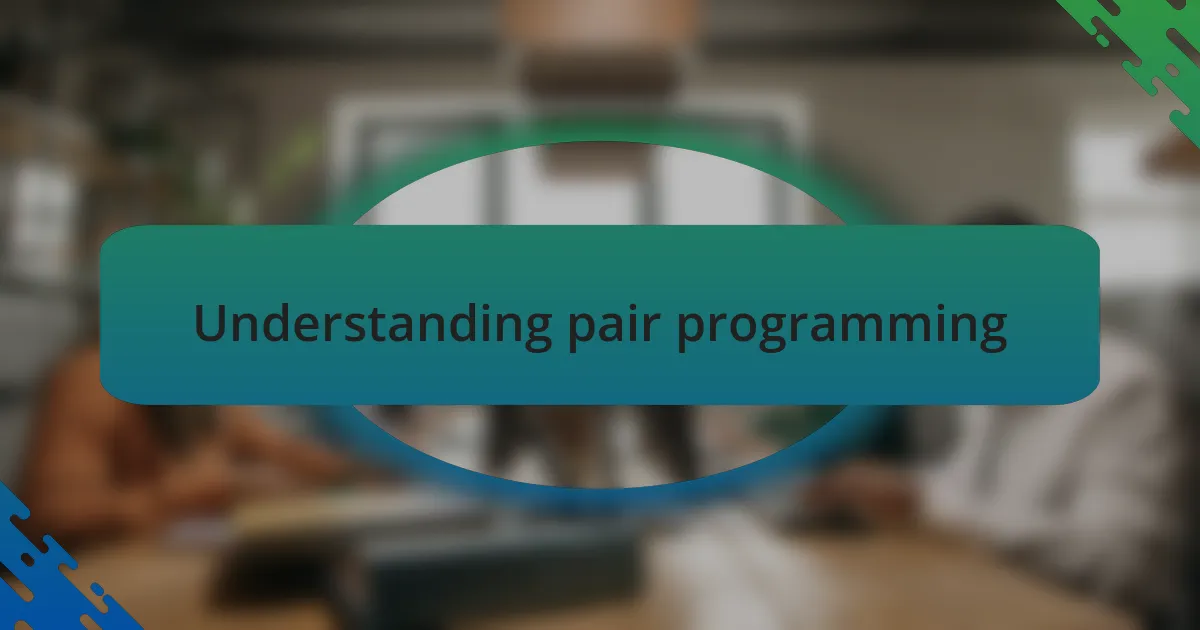
Understanding pair programming
Pair programming is an agile development practice where two programmers work collaboratively at one workstation. In my experience, this approach fosters a unique synergy that can transform difficult tasks into enjoyable challenges. Have you ever noticed how sharing ideas in real-time can lead to creative solutions you might not have thought of alone?
I remember a particular project where my partner and I tackled a tricky bug. Instead of feeling frustrated, we turned the issue into a brainstorming session. As we discussed potential fixes, the atmosphere became charged with excitement, and we ultimately discovered a more effective solution together than either of us would have found individually. Isn’t it fascinating how collaboration can lead to breakthroughs?
The emotional boost from pair programming can’t be understated. When you share victories and setbacks with someone else, it creates a sense of camaraderie that can be incredibly motivating. This experience not only improved my technical skills but also deepened my appreciation for teamwork in software development. How can such a simple method have such a powerful impact on both productivity and morale?
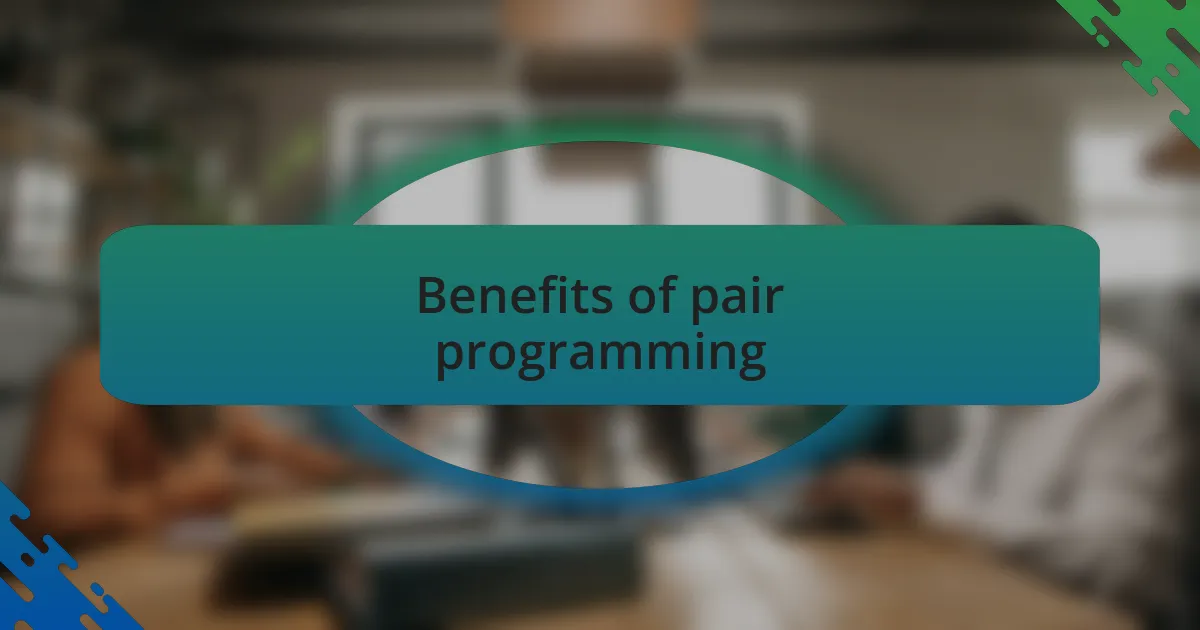
Benefits of pair programming
The benefits of pair programming are vast, but one that stands out to me is the accelerated learning curve. When I first paired with a more experienced developer, I was amazed at how quickly I absorbed new concepts. They would explain their thought process as we worked, breaking down complex problems into manageable steps. Can you think of any other learning environments where real-time feedback is so immediate and effective?
Another significant advantage is the reduction of code errors. During one project, I vividly recall catching a critical mistake in my partner’s code before it made it to production. This experience reinforced the importance of having a second set of eyes, especially during the crucial debugging phase. Isn’t it reassuring to know that collaboration can lead not just to better solutions, but also to less stressful release cycles?
Lastly, there’s an undeniable improvement in communication skills. Through pair programming, I learned to articulate my thoughts more clearly and concisely. It was enlightening to see how my verbal explanations could influence our coding direction. So, how can effective communication enhance not just our code, but our entire development process? The answer lies in the connections we form with our teammates.
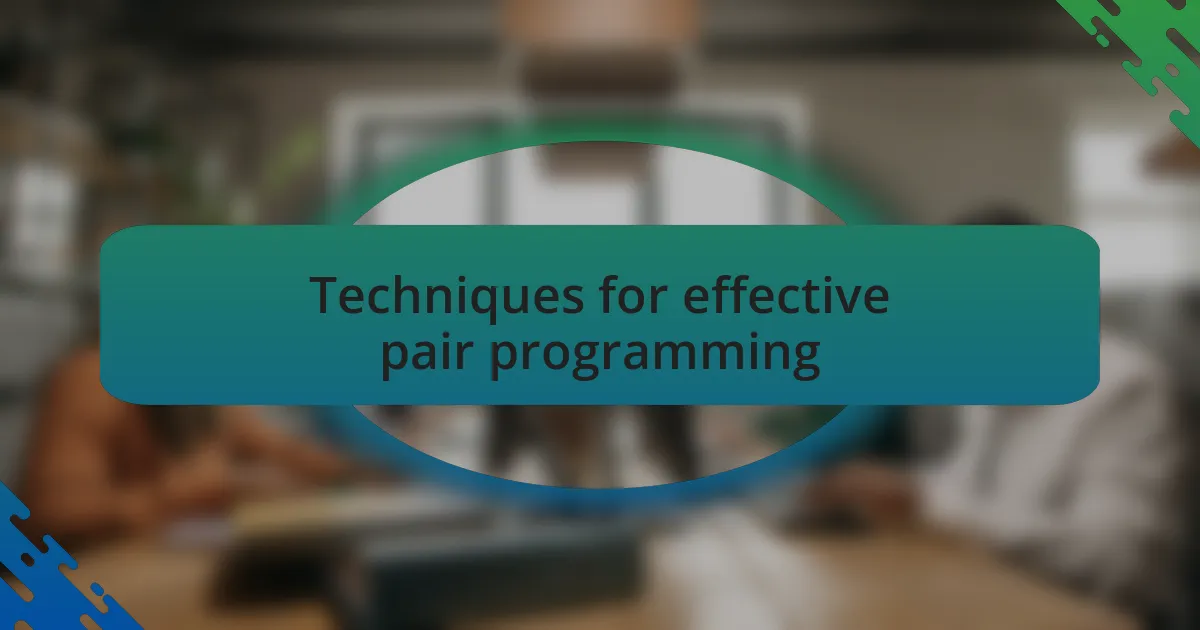
Techniques for effective pair programming
One effective technique I’ve found in pair programming is the driver-navigator model. In this approach, one person writes the code (the driver) while the other reviews and strategizes (the navigator). This balance fosters a dynamic where each participant can focus on their strengths. I often noticed that when I was the navigator, I could spot potential issues before they escalated, allowing us to pivot quickly. Have you ever had only one person trying to drive and navigate at the same time? It usually leads to confusion.
Another technique that stands out is establishing clear goals for each session. I remember a time when my partner and I started with a list of specific tasks we wanted to accomplish. This gave us direction and a sense of achievement after each session. It felt rewarding to check items off our list, which built momentum for future collaborations. Isn’t it fulfilling to have a tangible measure of progress?
Frequent communication is indispensable in pair programming as well. Sharing ideas and asking questions can drastically improve the coding experience. For instance, there were moments when I felt stuck, and simply verbalizing my thoughts led my partner to propose a solution I hadn’t considered. It’s incredible how such simple exchanges can transform frustration into clarity. Do you think open dialogue could be a game changer in your own coding sessions?
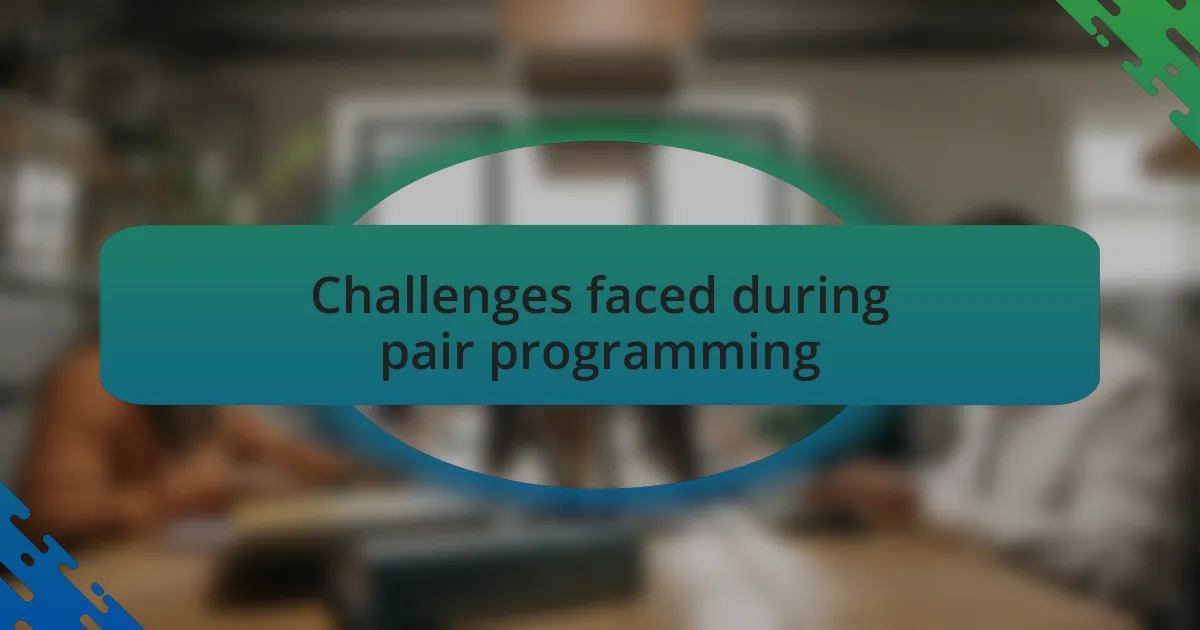
Challenges faced during pair programming
Often, pair programming isn’t a smooth ride. One challenge I encountered frequently was the mismatch in skill levels between partners. There were sessions where I felt like I was racing ahead, while my partner struggled to keep up. I remember one specific instance where my eagerness to tackle a complex algorithm felt overwhelming for my partner. How do we bridge that gap without leaving anyone behind?
Another hurdle can be personality clashes. I’ve paired with programmers who had very different working styles or communication preferences. For example, I once worked with someone who preferred silence and deep concentration, while I thrived in a more vibrant, discussion-driven environment. It was a struggle to find common ground. Have you ever found your coding rhythm disrupted by differing dynamics?
Time management poses its own set of challenges during pair programming. I’ve noticed that sessions can easily stretch longer than planned when discussions get deep or when we lose track of our goals. There have been times when I left a coding session feeling drained rather than accomplished, simply because we spent so much time exploring avenues that didn’t lead us anywhere productive. How do we maintain focus without stifling exploration?
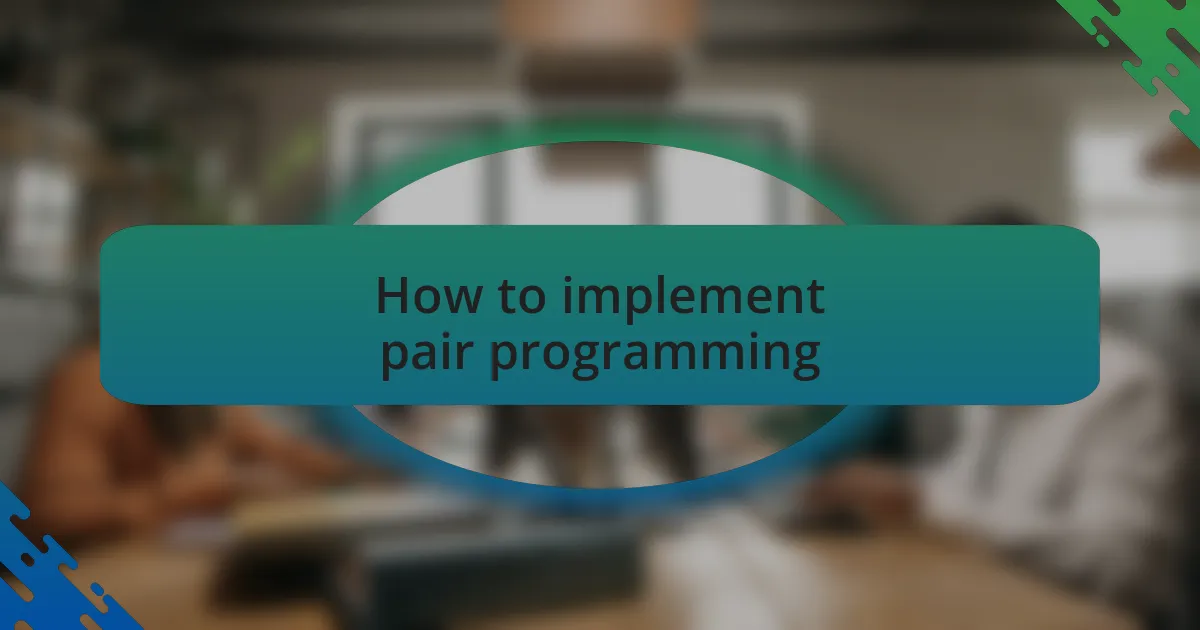
How to implement pair programming
To implement pair programming effectively, start by establishing clear roles: the “driver” who writes the code and the “observer” or “navigator” who reviews the work. I remember a session where we decided to switch roles every 20 minutes. This not only kept us engaged but also ensured that both of us contributed equally to the problem-solving process. Have you thought about how critical role clarity is in maintaining an effective rhythm during coding sessions?
Setting up a conducive environment is equally important. I once selected a cozy coffee shop to work on a project with a colleague. The ambiance, combined with our shared enthusiasm, fueled our creativity and collaboration. A comfortable space free from distractions can make a significant difference in how smoothly your sessions flow.
Lastly, I’ve found that regular check-ins can help maintain momentum. Midway through a lengthy coding session, I like to pause and discuss our progress and any roadblocks we’re facing. It keeps communication lines open and prevents frustration from bubbling over. Have you considered how addressing issues in real time can shift your productivity?